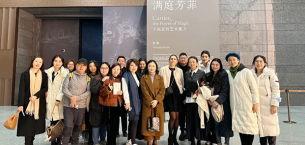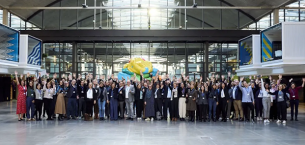
A research paper on leadership and management written by HEC Paris Professor Kevyn Yong.
How does creativity work? Kevyn Yong’s work extends today’s understanding of the notion by dissecting the psychological mechanisms underlying the creative process. Creativity is not only a question of having access to new information; it is also based on constructive controversy and competence based trust. Under these conditions, same-discipline interactions can have a creative advantage over cross-discipline ones by giving access to deeper new knowledge.
It is commonly thought that cross-discipline interactions foster creativity as they provide exposure to new knowledge, lead to combination of ideas and offer new perspectives. Following this logic, same-discipline interactions were not considered as producing creativity. Kevyn Yong decided to question this postulate by studying the effects of same discipline interactions on creativity in an interdisciplinary network. The author demonstrates that creativity is based on two other mechanisms – constructive controversy and competence-based trust – and that, in the presence of both, same-discipline network can have a creative advantage.
DEFINITION OF CREATIVITY
Since the late 80’s, creativity has been defined as the process of combining non-overlapping knowledge to generate fresh ideas that are novel and useful. The process of creativity can be decomposed into two phases: first gathering new ideas, knowledge and processes and then combining them with “old” ideas to find new ways of thinking or doing things. This definition, focused on the presence of non-overlapping knowledge, led researchers to study mostly cross-discipline interactions. They provided evidence that interacting with someone with a different field of expertise facilitates creativity. This kind of interaction gives access to a larger scope of ideas, knowledge or processes encouraging the second phase of creativity, i.e. the combination of old ideas with new ones. But all cross-functional teams are not necessarily creative ones: people tend to focus on what all participant of the discussion already know. What psychologists name “the common knowledge effect” results in a tendency to avoid conversations that could become conflicts. Similarly, we all have experienced discussions with a colleague that actually was creatively productive.
Believing that same-discipline experts share precisely the same knowledge is a common oversight.
BEYOND THE QUESTION OF NONOVERLAPPING KNOWLEDGE
Kevyn Yong’s research on creativity proves that there is actually more to the process of creativity than accessing non-overlapping knowledge. Non-overlapping knowledge alone does not determine creativity. It provides the potential for it but whether this new knowledge gets used depends on two psychological mechanisms: one that highlights and directs attention to differences and another that helps perceiving these differences can be useful ones.
1. Constructive controversy. Constructive controversy is defined as being comfortable openly discussing your own ideas with someone else’s, as well as being comfortable engaging in critically discussing someone else’s ideas. It corresponds to a state of mind where there is willingness to explain, no feeling of being threatened by the other’s questions. In the presence of constructive controversy, there can be no interpersonal conflicts, no personal attacks as the participants to the discussion feel safe from being evaluated. The psychological pattern of constructive controversy enables people to focus on their topic of discussion and brings attention to the differences in thinking, beliefs and experiences. It encourages focusing on non-overlapping knowledge, the potential to creativity.
2. Competence-based trust. The second essential mechanism for creativity is competence-based trust. It is defined as the trust someone has in another’s expertise and intellectual abilities. The importance of trust in the process of taking into account someone’s ideas has already been proved. When trust is based on competence, new ideas are more easily perceived as useful. As Kevyn Yong puts it: “The perceived usefulness of non-overlapping ideas will motivate the scientist to think more deeply about how combining the non-overlapping ideas with initial ideas might reveal new possibilities and fresh perspectives that he/she did not consider before.”
THE CREATIVE ADVANTAGE OF SAME-DISCIPLINE TIES
Believing that same-discipline experts share precisely the same knowledge is a common oversight. No two people have exactly the same knowledge nor the same interests. Non-overlapping knowledge does exist between two experts in the same field, but it is a deeper, more hidden one: a tacit and complex knowledge. Same-discipline interactions differ from cross-discipline ones by the level of knowledge exchanged. When chatting with someone from a different discipline, you will stay on a basic level of information. On the other hand, the interaction between two fellow experts have the potential to lead to a more precise and richer conversation. But non-overlapping knowledge can be revealed by both types of interaction. This new finding deepens the understanding of the creative process, going beyond the link between non-overlapping knowledge and creativity, and showing that same-discipline ties can also facilitate creativity and innovation.
Based on an interview with Kevyn Yong and the article “The Creative Advantage Of Same-Discipline Network Ties” (working paper, 2010).



